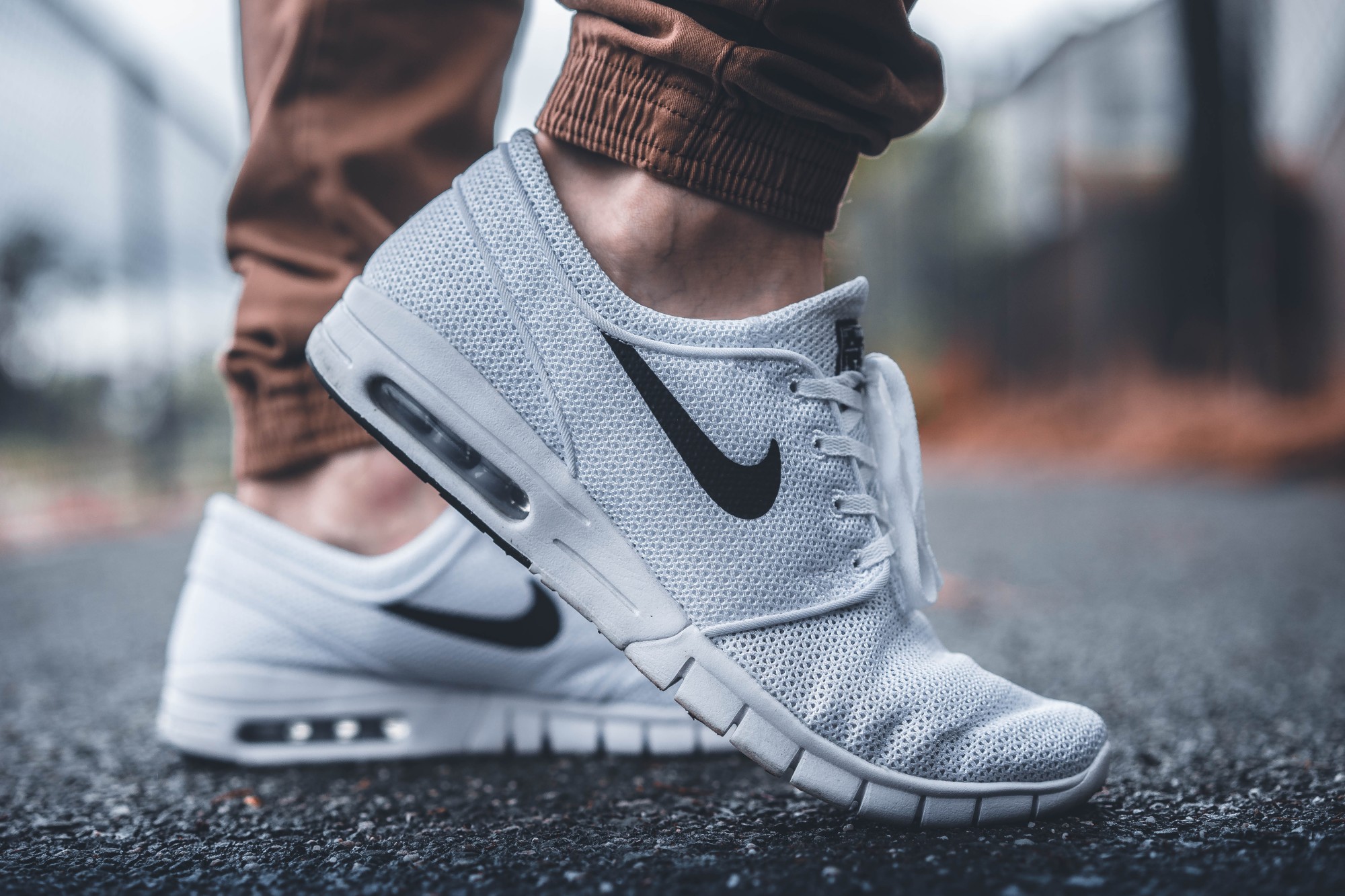Make it Tasty: The Top Tips for Creating a Food Logo
Posted on August 26, 2019 by Logo Design Tips and Tricks

The food retail industry is projected to rake in a staggering 5.75 trillion dollars this year. As global populations continue to balloon, that number will keep trending upwards.
All of that opportunity in the food niche has inspired many entrepreneurs to enter the fray by opening restaurants, creating private-label goods for grocery store distribution and more.
Whether you’re in that camp of new “food-preneurs” or you’ve been in the game for a while, you’re going to need a strong logo to make an impact in a market that’s becoming increasingly crowded. Our write-up below shares some tips that can help you craft a food logo that your customers will find mouth-watering!
1. Incorporate Your Signature Item
Does your food brand have a signature item? If it does, making that item a focal point of your logo’s design is a great idea.
In a perfect world, your logo will communicate with customers in an instant who you are and what you do. If you’re a food brand that sells burgers, having a burger in your logo immediately achieves those ends.
To be clear, logos don’t need to be that obvious for your brand to be successful. Look no further than an apple being “Apple’s” logo for their computer products. We will say though that clarity is usually the best foundation to build your logo on.
2. Think About What Makes Your Brand Special
Maybe having a burger as the logo for your burger brand is too obvious for your taste and you’re looking to do something that’s more unique. We think that’s a great idea!
That aspiration begs the question: What makes you unique?
Are your burgers vegan? Are your salads constructed from veggies that were sourced from fair-trade farmers?
If there’s something special about your food brand that people would be hard-pressed to find elsewhere, featuring that unique tidbit in your design can help your logo pop.
3. Color Means a Lot to Food Logos
Color can have a psychological effect on humans. As a food retailer, what’s the psychological effect that you’d like to have on prospective customers that see your logo?
If making money is important to you, hunger should be at the top of your list.
To that end, make sure that the colors you use in your logo are appetizing. Brown and green aren’t going to make people want to eat. Yellow and red, on the other hand, can really work in your favor.
4. Don’t Think About Color Until You Love Your Logo in Black & White
Yes. Color is essential when it comes to effective food logo design. The problem is that people get so fixated on color when they’re conceptualizing their logo that they forget to spend enough time ensuring that their logo’s base is excellent.
The base of your logo (its black and white sketch) should be visually appealing and communicative. Once you can confirm that it’s both of those things, you can start using color to plus it out.
If you lead your logo’s design with color and not with a strong art foundation, your logo is going to be mediocre.
5. Have a Look at Your Competition
There are thousands of players in the food space that are wildly successful. All of them have logos. Take a look at the big players in your food niche to see if you can find commonalities in the logos that they use.
What do those companies do that you like? What can you do differently to stand out?
A little bit of competitive research can go a long way when it comes to avoiding mistakes and increasing your odds of stumbling onto a great idea.
6. Think About Versatility
Your food logo is going to be present in almost every piece of marketing collateral that you present to the world. Does it have the versatility that it needs to look great in all of those places?
For example, a giant hotdog might look great on a rectangular billboard. How would it look in a square Instagram post though?
What about when you get into food packaging design? Will your logo look great on a food box/bag?
Think hard about how your logo will be leveraged over the lifespan of your business. Choose a final design that you predict will be easy to work with.
7. Consult With Your Customers
Your company and all of its branding pieces exist for one purpose: to sell things to your customers. Therefore, it stands to reason that you should source feedback from your customers to make sure that your logo is having the effect that you want it to have.
If you already have a customer base, create a few logo designs and ask for their feedback. Figure out which design they like best and leverage their suggestions to make that design even better.
Don’t have a customer base yet? No problem!
Figure out who your target customer is, put together a focus group and get that group’s feedback on your designs.
Getting feedback from the group that matters most to your company’s success is an excellent way to help refine your design quickly and come away with a final food logo that really works.
Finishing Up Our Tasty Food Logo Tips
Creating a good food logo isn’t dissimilar to creating a great logo for any kind of business. There are though, a few special considerations that coincide with food that are worth leaning on to make your logo truly mouthwatering!
We hope that our tips have helped you move closer to your ultimate logo and we invite you to use our free logo making tools if you’d like to start drafting up some designs!
10 Genius Tips for Creating a Professional Law Firm Logo
Posted on August 26, 2019 by Logo Design Tips and Tricks

According to the American Bar Association, there are 1,352,027 lawyers in the U.S. as of 2019. Without a distinctive brand, your law firm could end up fading into the crowd. So how do you stand out?
To build your brand, you need to start with a professional law firm logo.
A strong, unique logo can represent your entire law firm. You won’t just stand out. Potential clients will even begin to recognize your firm on-sight.
Here are 10 genius tips to help you get started. With these tips, you can create a professional logo that stands out from all the rest.
1. Know Your Niche
No two law firms are exactly alike. Your distinct expertise can help you stand out and attract a specific set of clients.
Before you start designing your law firm logo, consider your audience. Think about them in terms of likes, dislikes, needs, and demographics. These details can tell you a lot about how to appeal to your clients.
Your firm’s specialty can help you break apart from the pack, too.
Does your firm focus on environmental law, or perhaps car accidents? Firms that specialize in these areas would use different imagery than maritime attorneys. Knowing your niche can help you find the right imagery for your logo.
The goal of good logo design is to tell people who you are and what you do with the right imagery. Recognizing your niche in the design can help clients recognize it, too.
2. Keep It Simple
If you want a memorable logo, keep it simple. There are other ways to stand out as a law firm without a messy, complicated logo. After all, a complicated logo is more difficult to remember.
You shouldn’t make it so simple that it looks like all the rest, though.
Instead of choosing overused imagery, try art that keeps it simple but leaves an impression.
A simple logo also improves its functionality, which we’ll get to below.
3. Consider Color
According to this research, color can improve brand recognition by up to 80%.
When choosing your brand’s color scheme, keep color psychology in mind.
For example, we associate the color yellow with energy, red with passion, and green with growth. Different shades of these colors, however, can also change the meaning. If you choose blue, light blue conveys calmness, which darker blues conveys intelligence.
Try to choose three main colors for your law firm logo. That way, you can create various versions of your logo based on the use.
What if you create shirts with different colors or want to use a white banner instead of a white one? Creating versions of your logo with different color schemes can help make your logo easier to use.
4. Don’t Forget Function
Speaking of banners, shirts, and other marketing materials, your logo needs to work for multiple functions.
For example, you’ll want your logo to display on your website and social media. If you have a responsive website, your logo will change sizes depending on the browser window’s size.
Meanwhile, your logo will need to expand for much larger sizes if you’re using it for a billboard.
In other words, your logo needs to work whether it’s getting bigger or smaller. Make sure you save your law firm logo in the proper file sizes to make resizing easier.
5. Select a Firm Font
Your font can help you stand out just as much as the imagery and color scheme can.
First and foremost, the font should be easy to read. Otherwise, how will people know who you are? Choose a font that’s clean, but feel free to look beyond the standard fonts.
Avoid cursive or script fonts, which don’t work well for law logos.
You can choose traditional, modern, or somewhere in between. The font you choose depends on your law firm’s brand and the message you’re trying to convey.
6. Check out the Competition
If you’re trying to stand out from the crowd, you need to know what that crowd looks like, first.
Go ahead and research the competition. What are they doing to stand out? What message does their logo convey?
Ask yourself what you like and don’t like about their logos. Researching the competition can help you determine what approach you want to take for your own logo.
7. Focus on Your Name
Most law firms build their reputation on their firm’s name. Since the name is the focal point of the logo design, find a way to bring it into the spotlight.
Take a look at where the name is located in the logo design. Is it overshadowed by the imagery?
What about the font and size? Play around with your law firm’s logo until you find the right combination.
8. Hire a Professional
A professional designer can help you avoid basic mistakes. They also know the latest design trends. With their help, your logo will look good and appeal to your target audience.
Hiring a professional who has worked with law firms in the past can give you some insight, too.
9. Keep It Up-To-Date
The latest trends in graphic design change all the time. If you want your logo to stand out from the crowd, it’s going to need an update from time to time.
You don’t have to scrap your entire logo and start over.
Instead, you can make small changes to make sure your firm still looks fresh and relevant.
10. Make It Unique
Your law firm is already unique, but why?
Pinpoint your unique value—what you offer that no other firm can. While you’re at it, consider your company mission. Since they’re both unique to your company, capturing your value and mission in your logo will make the design unique, too.
Looking Good: 10 Tips for a Professional Law Firm Logo
Look good, feel good, and stand out from the crowd. Using these 10 tips, you can create a professional law firm logo to help you attract new clients. With these tips, you’ll outshine the competition in no time!
Check out our online logo maker today to get started with your own logo!
5 Tips for Designing the Perfect Law Office Logo
Posted on August 26, 2019 by Logo Design Tips and Tricks

When people are looking for law firms to help them with a legal matter, it’s not hard for them to find one. There are more than 1.3 million lawyers in the U.S. today working at more than 450,000 law firms.
So, what are you going to do to make your law firm stand out?
One of the steps you can take to make your law firm unique is to design a winning law office logo. You can market your firm better when you have the right logo in place.
Here are five tips for designing the perfect law office logo.
1. Start by Looking at Other Law Firm Logos
Before you start trying to design the perfect law office logo, look around at the logos that other law offices have designed.
This will give you a better idea of what makes good logos so effective. It’ll also ensure that your logo doesn’t end up looking too similar to a competitor’s logo.
See this site to check out what a good law office logo should look like.
2. Decide What You Want Your Logo to Say to People
Your law office logo should communicate something to those who see it. They should get a good idea of what your law firm is all about based on your logo.
If, for example, your law firm specializes in helping car accident victims, you might want to find a way to work that into your logo. It’ll help bring in more business from those in search of car accident lawyers.
3. Pick Out the Right Colors for Your Logo
The colors that you include in your logo are arguably the most important aspects of it. The colors you use will invoke certain emotions in people.
Red, for instance, is a color that’s known to make people feel excited or angry. Yellow, meanwhile, is a color that often makes people feel friendly or optimistic.
Try to design your law office logo with colors that invoke the right emotions in people. This might subconsciously motivate them to get in touch with your law firm.
4. Select the Right Font for Your Logo
In addition to considering which colors to use in your logo, you’ll also need to choose the right font. It’ll be used to write out the name of your law firm.
A font that expresses some level of seriousness and professionalism is best for law firms. Find a font that’s easy to read, too.
5. Keep Your Logo on the Simpler Side
When you’re in the process of designing a law office logo, it’s easy to overdo it. You start off with something simple and, the next thing you know, your logo includes everything from a gavel to a judge’s robe.
Don’t get too out of control! You’re better off keeping your logo simple rather than bogging it down with generic law-related images that will complicate things.
Design the Best Law Office Logo for Your Law Firm
If you want to attract more clients to your law firm, creating the right law office logo is a step in the right direction.
You’re going to use your logo on all of your marketing materials. It’s also likely going to appear prominently on your signage. Make sure it’s something that you’re proud to show off to the world.
Check out our other articles for more advice on designing a high-quality logo for your law firm.
Trade Basics: Can I Trademark a Logo (and How Do I Do It)?
Posted on August 25, 2019 by Logo Design Tips and Tricks

More companies are applying for trademarks than ever before.
And thanks to technology and electronic filling, it’s easier than ever to apply for a trademark for your business.
If your business has a brand that you want to protect, you should seriously considering trademarking your logo. You might be wondering if you can even trademark your logo and how to go about doing so.
In this article, we’ll explain the basics of trademarking and how to trademark a logo to benefit your business.
What is a Trademark?
Simply put, a trademark protects your brand.
You can trademark any word, image, logo, or slogan that you use to identify your brand and your products. A trademark protects you from someone else stealing your idea.
They key is that the concept you want to trademark has to be distinctive. There’s flexibility when it comes to the shapes a trademark can take.
Your trademark identifies you to consumers. When many people think of a trademark, they picture a logo such as the Nike swoosh. The swoosh symbol identifies an item as a product of the Nike brand.
There are many avenues to take for personalized options of products featuring your company’s logo to boost your brand image.
Trademarking your idea protects your business from competitors. If another company creates a product with a logo remarkably similar to yours, you could lose money and customers. It’s especially frustrating if the other product is of inferior quality.
You don’t want consumers to mistake another product as your own or vice versa. If you trademark your idea and another company does create something similar enough that consumers could be confused, they are guilty of trademark infringement under the law.
They’ll have to stop using the trademark in question if you pursue legal action.
It’s worth noting that it’s usually businesses that own trademarks rather than the designers who create them. The business who uses the trademark on products in commerce is the trademark owner.
Trademarking a Logo
Technically, your logo becomes a trademark as soon you start using it and consumers are able to recognize the business behind it.
This means that when you use your logo in commerce on packaging, labels, or products and its symbols, shapes, and colors are commonly understood to represent your company, the logo is a trademark.
The law in the United States views trademarking this way, but there are some caveats. Unless you officially register your logo as a trademark, you are only eligible for common law rights to your trademark and your rights are limited geographically.
It’s also hard to enforce these limited rights. This is why we recommend officially registering your logo as a trademark through the U.S. Patent and Trademark Office.
Registering a Trademark
Registering your trademark gives you protections not offered to common law trademarks.
If you’re serious about growing your business and protecting your brand, you’ll want to officially register your logo as a trademark. Here a few of the many reasons to register your trademark:
- You’ll have what’s called presumptive ownership of the trademark on a national level. That means you’ll own the trademark everywhere in the United States. Remember that common law trademarks often come with geographical limitations.
- You can request that U.S. Customers and Border Protection confiscate any counterfeit or infringing goods that are imported into the country.
- You’ll qualify for trademark protection in countries around the world.
- You can sue for infringement on the federal level instead of in state court.
- You’re protected under the federal Anitcybersquatting Consumer Protection Act. This means you can sue anyone who registers for a domain name that is identical or similar enough to your own to confuse customers.
Can I Trademark a Logo?
So you want to trademark your logo. Can you?
If your logo is original and as long as it’s not misleading or offensive, you can trademark it. In fact, hundreds of thousands of trademarks are approved by the Patent Office each year.
Remember that your logo will be denied for a trademark if it’s too similar to an existing one. It can’t look similar, sound alike, or mean the same thing as another logo.
Of course, this is not true if the products are totally unrelated.
How to Trademark a Logo
Basically, you simply need to apply for a trademark by submitting an application to the U.S. Patent and Trademark Office.
The Office will review your application and approve or deny your trademark request. It’s important to note that your logo will be protected from the date you file for a trademark as opposed to the date the trademark is issued. This allows you to start using the logo right away.
If your business only operates in one state, you may apply for a state trademark. In order to apply for a federal trademark, you have to conduct business in more than one state.
If you are a web-based business or operate across state lines, you should apply for a federal trademark.
Register Your Logo as a Trademark Today
Now that you know a little more about how to trademark a logo, it’s time to take action.
If your business is growing, you should trademark your logo as soon as possible. If you aren’t sure if you can trademark your logo, a patent and trademark attorney can do an analysis of current registered trademarks and advise you further.
For more tips on building your brand using a logo, check out our blog.








